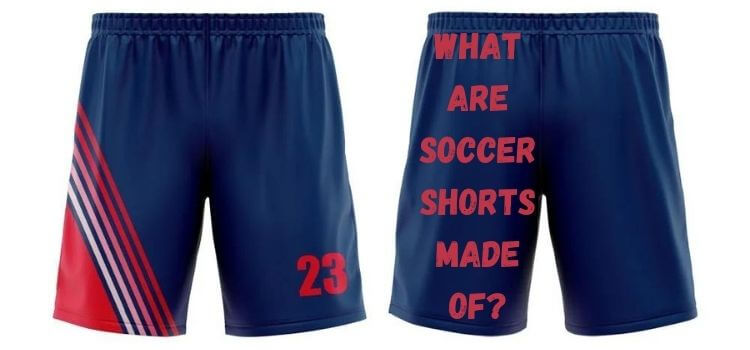As an Amazon Associate, I earn from qualifying purchases
Soccer shorts are not just clothing; they are an essential component of a player’s gear, facilitating agility, comfort, and optimal performance on the field. When considering the question, “What are soccer shorts made of?” it’s crucial to delve into the intricacies of their construction.
The materials used in crafting shorts play a pivotal role in determining their functionality, durability, and overall quality. In this article, we will explore the various materials commonly used in the manufacturing of soccer shorts, ranging from traditional fabrics to modern technological innovations.
Understanding the composition of shorts is essential for players and enthusiasts alike, as it directly impacts their comfort and performance during gameplay. So, let’s unravel the mysteries behind the materials that make up shorts and discover how they contribute to the game’s excitement and intensity.

Introduction to Soccer Shorts
Soccer shorts are an integral part of a player’s uniform, providing comfort, flexibility, and performance enhancement during the game. Additionally, the material of the shorts is critical to players’ comfort and freedom of movement.
History and Evolution
Initially, soccer shorts were made from basic materials like cotton. Over time, advancements in textile technology have led to the development of more innovative and performance-enhancing materials.
Importance of Material in Soccer Shorts
The choice of material in shorts directly impacts a player’s performance on the field. It affects aspects such as moisture-wicking, breathability, flexibility, and durability.
Traditional Materials
Traditionally, shorts were predominantly made from materials like cotton, polyester, and nylon. These materials offered essential comfort but lacked the advanced features required for high-performance sports.
Modern Materials
Modern soccer shorts utilize advanced materials such as Dri-Fit technology and spandex blends. During intensive physical activity, these materials are designed to wick sweat, enhance flexibility, and enhance overall comfort.
Features of High-Quality Shorts
High-quality shorts boast features like moisture-wicking capabilities, lightweight construction, strategic ventilation, and reinforced stitching for durability.
Benefits of Different Materials
Cotton: Provides natural comfort but may retain moisture, leading to discomfort during prolonged activity.
Polyester: Offers excellent moisture-wicking properties and durability, making it a popular choice for shorts.
Nylon: As a result of its strength and abrasion resistance, nylon is often blended with other materials to enhance its durability.
Dri-Fit Technology: Designed to wick away sweat from the skin so that players stay dry and comfortable.
Spandex Blends: Provides exceptional flexibility and freedom of movement, which are crucial for soccer players during dynamic movements on the field.
Durability and Comfort
When choosing the material for soccer shorts, durability and comfort should be considered. While polyester and nylon offer excellent durability, spandex blends provide unmatched comfort and flexibility.
Considerations for Choosing Soccer Shorts Material
When selecting shorts, players should consider factors such as climate, personal preference, budget, and performance requirements. Breathable materials are preferable for hot conditions, while moisture-wicking fabrics are essential for intense gameplay.
Environmental Impact of Materials
The demand for eco-friendly materials in sports apparel is growing as awareness of environmental sustainability increases. Brands are now exploring the recycling of polyester and organic cotton in an effort to reduce their environmental impact.
Innovations in Shorts
Innovations in textile technology continue to drive advancements in soccer shorts design. From seamless construction to 3D printing techniques, manufacturers are constantly pushing the boundaries to enhance players’ performance and comfort.
Conclusion
The material of soccer shorts plays a crucial role in determining a player’s comfort, performance, and overall experience on the field. By understanding the characteristics and benefits of different materials, players can make informed choices that enhance their gameplay and enjoyment of the sport.
Frequently Asked Questions (FAQs)
Cotton, polyester, and nylon are among the most common materials used in shorts.
Consider factors such as moisture-wicking properties, breathability, durability, and personal comfort preferences when choosing the material for shorts.
Yes, eco-friendly options such as recycled polyester and organic cotton are becoming increasingly available in the market.
Some brands offer customization options where customers can choose specific materials for their shorts, depending on their preferences and requirements.
Professional players often have specific preferences for materials that offer optimal performance, comfort, and durability during gameplay.
As an Amazon Associate, I earn from qualifying purchases


